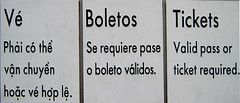This blog post, written by Lyndi Hewitt, originally appeared on the Mobilizing Ideas blog and appears here with the author and institute’s permission. We liked it so much we just had to share!
For those of us prescient enough (wink) to plan a social movements course for this semester, it’s been quite a ride. I’ve been teaching a first year seminar on global justice movements and, like many other instructors, altered my carefully planned syllabus in response to the unexpected wave of activism that emerged before our very eyes.
As the students in the course simultaneously processed core social movements scholarship and news coverage of the Occupy Wall Street protests, I was particularly struck by the fact that many students had very specific and often inaccurate ideas about who the protesters were (and what it cost them to be there) even after extensive, theoretically informed class discussion and news analysis. So I decided to invite the students to join me for a visit to Zuccotti Park. Newly equipped with social movements concepts, along with requisite iPhones and video cameras, the students and I ventured into the park on a chilly Saturday evening in early November. We observed a general assembly, discussed the various issues and frames represented among the signs, and interviewed protesters about their views. Despite the fact that most of the students were initially skeptical of Occupy Wall Street, they exhibited both intellectual curiosity and great respect for the protesters. One especially enthusiastic student prepared a short video documenting the protesters’ responses to his questions (which I share with his permission):
The two gentlemen featured prominently, both veterans, had a significant impact on the students. Their remarks around 5:50 encapsulate the disruption of students’ pre-existing assumptions: “I’m tremendously excited by what I see here. These people are extremely sophisticated people. They’re very intelligent people. They’re not bums. Don’t believe the media that we have nothing better to do, okay. We would like to be productive members of society. We were at one time and we would like to be again. We have a lot to contribute.”
Although we’d been discussing the Occupy Wall Street protests and applying social movement theories in the classroom for weeks, the experience of being in the park, seeing the encampment alongside the police, and talking with protesters proved to be a far richer learning opportunity for students. It blew the students’ minds that OWS protesters could be older, hard working, and patriotic; moreover, hearing movement grievances articulated face-to-face catalyzed a depth of understanding that wasn’t achievable simply through reading and watching video clips about those same grievances. Interestingly, our debriefing after the field trip revealed that over half the students had changed their opinions of the protesters as well as the legitimacy of the movement as a whole (all, it turned out, from an unfavorable to a more favorable opinion).
Seeing the OWS protesters through the eyes of my students reminded me how powerful a teacher experience is, and that more time spent in the midst of the action would be valuable for most of us.




